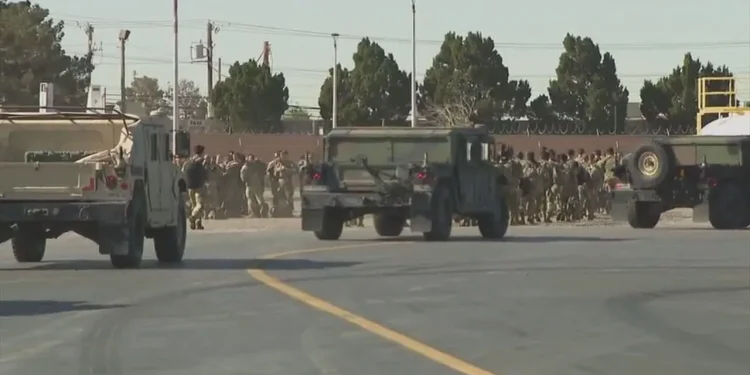Miles of open land stretch across Texas, where many migrants risk everything in search of the American dream. But now, parts of this land are being reclassified as military zones, giving active-duty troops new powers to detain civilians.
A fresh military zone has been established on the southern border of Texas. Miles of open land, rugged terrain where migrants risk it all to reach the U.S., are now designated as military zones, granting active-duty troops the authority to detain civilians.
Last week, the Department of Defense annexed a 63-mile stretch of land near El Paso, integrating it into Fort Bliss. This marks the second “National Defense Area” established in two months. Another zone, the Roosevelt Reservation in New Mexico, is now part of Fort Huachuca in Arizona. Fort Huachuca has already charged over 80 migrants under Title 50, a National Defense law used for trespassing on military bases.
“There’s the legal element, and there’s a narrative element I don’t think it’s a positive policy decision,” said Geoffrey Corn, a retired U.S. Army Lt. Colonel and Director of the Center for Military Law and Policy at Texas Tech University.
Corn argues that the Biden administration found a way around the Posse Comitatus Act, which prohibits federal troops from engaging in domestic law enforcement.
“By expanding these military installations through an invocation of the National Emergencies Act… [the president] has just bypassed the restrictions of the Posse Comitatus Act and enabled federal military forces to enforce customs and immigration law through the fiction, if you will, of protecting the military installation,” Corn said. “So it was creative.”
However, Corn cautions that this creativity fuels political messaging.
“From the narrative perspective… everything that the Trump administration and the Trump campaign have done has been to try and characterize the flow of migrants to the United States as an invasion,” he explained.
Corn and others argue that military expansion creates troubling gray areas. He warns that soldiers aren’t trained for civilian policing.
“Their mentality for use of force is more instinctively aggressive. That’s what you train for in war,” Corn said. “They are not trained for graduated use of force the way border agents or deputies are.”
On the other hand, some local law enforcement sees potential in this new development.
Terrell County Sheriff Thaddeus Cleveland, who patrols the remote border with limited resources, believes military technology, such as unmanned aerial systems (UAS), could serve a dual purpose.
“I’ve always said, you know, why not bring the Department of Defense down to the border to train their pilots of the unmanned aerial systems?” Sheriff Cleveland suggested. “You’ve got a real live area that they can actually train, detect people, assist with apprehensions—the same thing they would be doing in a battlefield overseas—somewhere they can do right here on our home border, and add further protection to the border.”
However, Corn pointed to past incidents, like the 1997 shooting of 18-year-old Ezequiel Hernández by U.S. Marines in Presidio, Texas, as a reminder of the dangers when soldiers assume policing roles.
Both Corn and Cleveland agree on one key point: illegal border crossings have decreased, and Texas National Guard’s Operation Lone Star is succeeding in its mission.









